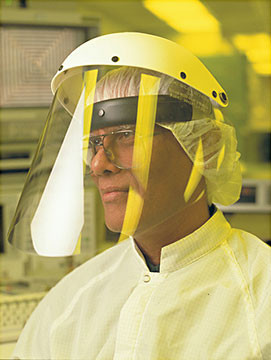October 28, 2021
Prescience Pays Off
How the State of Georgia’s past investment in GRA helped bring about a major manufacturing operation

Today’s news that the Korean company SKC will soon make semiconductor parts in Covington, Ga. is one of those extraordinary “full circle” stories.
First, as economic development news goes, it’s a big story: SKC and its business partners will invest more than $473 million in a first-of-its-kind endeavor – using glass to manufacture substrates for semiconductor chips, as opposed to silicon or other material. The operation will create 400-plus jobs in Newton County.
With SKC’s decision, years of hard work from Georgia’s Department of Economic Development clearly paid off. But a past investment of another kind by the State of Georgia played a significant role, too.
And that’s the other story.
Glass may well be the next frontier in semiconductor solutions. As a substrate – the inactive material that “packages” an active microchip – it has several advantages over ceramics, crystalline silicon and other materials options. It’s more affordable than silicon, and for electrical, physical, mechanical and other characteristics, glass checks a lot of the boxes.
We know this because of the pioneering work of a research enterprise at Georgia Tech. Starting in 2009, Georgia Tech’s 3D Systems Packaging Research Center (PRC) took glass-based substrates from a what-if idea all the way to a company like SKC announcing it will actually manufacture them.
For that journey alone, the center garnered more than $100 million in grants – most of it from industry partners – and had scores of researchers, graduate students and postdocs working on the concept of glass packaging. They published some 500 research papers on their work, each year moving the concept closer to reality.
So: SKC will make glass-based substrates, and the Packaging Research Center was the research epicenter for exploring and developing this new technology. And it so happens that Sung Jin Kim, SKC’s director of new business development, spent a few years on that research team at Georgia Tech.
But to close the circle, there’s another question: Why does Georgia Tech have the 3D Systems Packaging Research Center in the first place?
To answer that, you’d have to go back to 1993, when Rao Tummala took his youngest son to visit Georgia Tech as part of a college tour.
“He liked Georgia Tech a lot, but I wanted to find out a little more about the Institute before a decision was made,” says Tummala, who at the time was one of the top materials scientists at IBM in New York. “So, while on our visit, we walked up the hill to visit the dean of engineering, John White. It turns out, he was in his office. I asked him, Dean White, why Georgia Tech? And he said, who are you?”
Tummala introduced himself – and a moment of serendipity followed. Dean White had heard of Tummala, as the college was aiming to create an IBM Fellow position in materials science and engineering. The dean had been talking to IBM about potential candidates, and Tummala’s name came up.
Their ensuing conversations centered on what it would take to create a world-class research center to break new ground in packaging – not the cardboard-box kind, but the kind that could accommodate the exponential growth in the power of semiconductors.
The first answer to that question was an endowed chair for Tummala – and for that, Georgia Tech turned to the Georgia Research Alliance. Through GRA, the State of Georgia provides funds for such chairs, which are then matched by industry donations. And so Rao Tummala became one of the first GRA Eminent Scholars.
Tummala also needed a high-tech clean room and highly sophisticated technology to support fabrication, assembly and testing of new materials and systems-on-packaging. GRA’s model includes investment in lab infrastructure, so that Eminent Scholars can aggressively pursue research funding. Over time, the Alliance would invest $4 million to support Tummala’s vision and need for equipment.
While the clean room Tummala needed carried a price tag 10 times that figure, the initial GRA funding set him on his path to putting the pieces together. In his first month on campus, he applied for a grant from the National Science Foundation.
“They awarded us $35 million over 10 years to create a system on package research program,” says Tummala, who today is retired from Georgia Tech. He adds that the center was the first NSF Engineering Research Center established at Georgia Tech – a type of research enterprise coveted by universities.
So far, the 3D Systems Packaging Research Center has garnered a quarter-billion dollars in outside research funding and spun off seven startup companies. Its foray into glass-based packaging exploration, now 13 years and counting, may be its greatest legacy.
In today’s announcement, SKC reports that the company will begin rolling out glass-based substrates starting in 2023 – 30 years after Rao Tummala became a GRA Eminent Scholar.
Further testimony that the right investment, carefully made at the right moment, can bear fruit for many years to come.
